Tag Archives:Travel
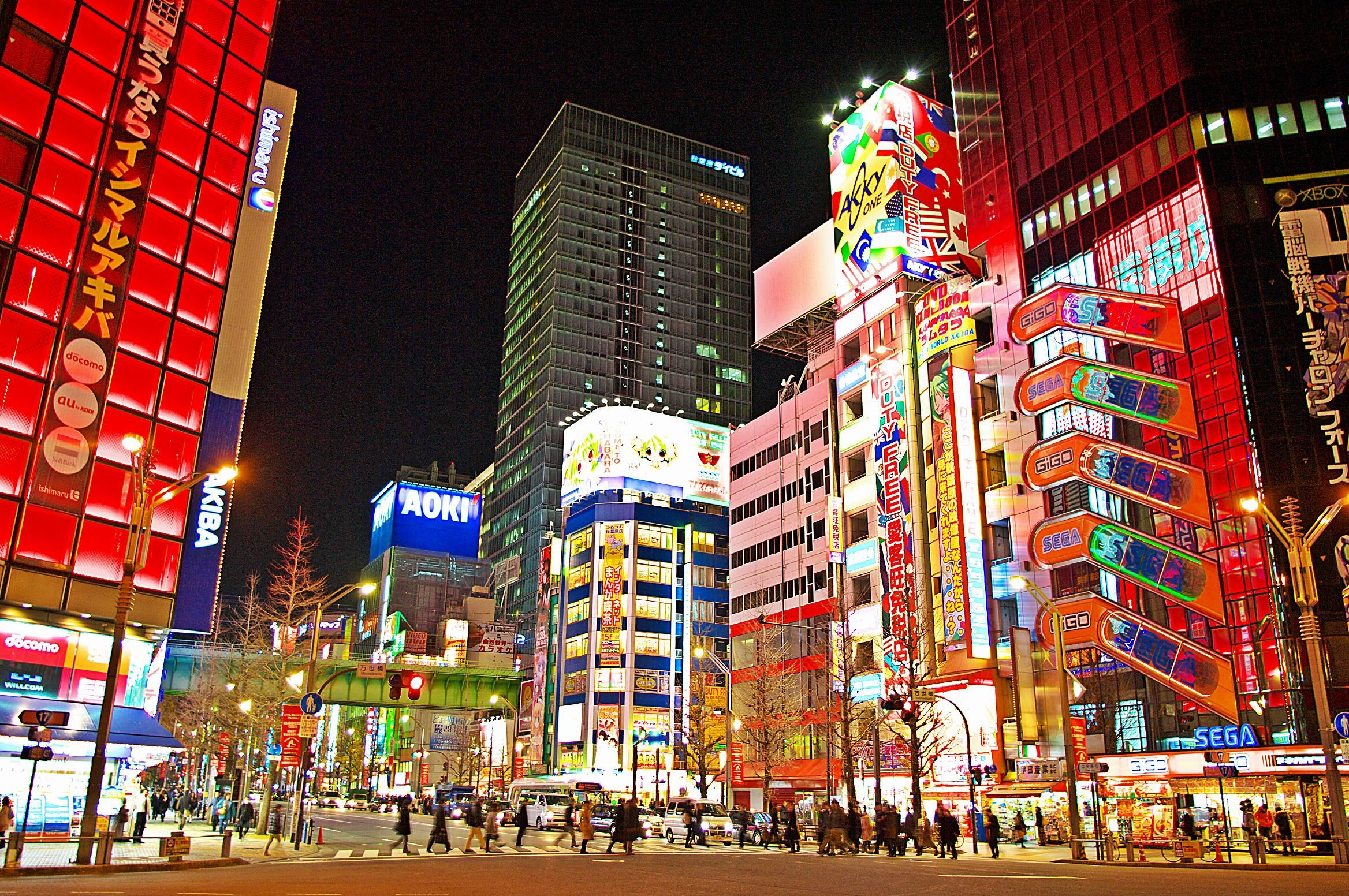
26
FebAkihabara
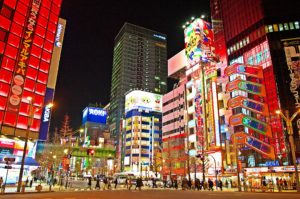 I really miss traveling, don’t you? I think you do, because in the past few months, I have noticed a slow but steady increase in the amount of passport appointments that are being booked here at the library. It seems that even despite COVID, many of you are ready to embark on some socially distanced vacation destinations, and we at the Morrill Memorial Library can help you get to your destination because we are also an authorized Passport Acceptance Facility with the U.S. Department of State! I, along with four other librarians at the library, can help you with processing your passport, and can advise you on how to renew your soon to be expired passport. Be sure to visit us online to learn more, or to book an appointment with one of our acceptance agents, at norwoodlibrary/services/passport-services or call us at 781-769-0200.
I really miss traveling, don’t you? I think you do, because in the past few months, I have noticed a slow but steady increase in the amount of passport appointments that are being booked here at the library. It seems that even despite COVID, many of you are ready to embark on some socially distanced vacation destinations, and we at the Morrill Memorial Library can help you get to your destination because we are also an authorized Passport Acceptance Facility with the U.S. Department of State! I, along with four other librarians at the library, can help you with processing your passport, and can advise you on how to renew your soon to be expired passport. Be sure to visit us online to learn more, or to book an appointment with one of our acceptance agents, at norwoodlibrary/services/passport-services or call us at 781-769-0200.
Though I am not quite as seasoned a world traveler as some of my fellow librarians here at the Morrill Library, the COVID pandemic has really made me reflect upon and appreciate the few times in my life thus far that I did have the opportunity to travel internationally. Though I had been to Canada a few times (my mother is a Canadian citizen), my first true experience with international travel was in 2007 when I was invited on a trip with my friend Kenneth and his wife Yvonne, to accompany them to Taishan and Beijing, China. The experience of traveling so far from home, and immersing myself in a language and culture that was so radically different from what I grew up with, was literally life changing. I had never traveled to another country before, so I was really nervous. However, I recall when after almost 24 hours of traveling, I got off the airplane to meet Kenneth’s father-in-law at the Guangzhou International Airport. When Kenneth’s father-in-law saw me, he walked over to greet us and said with a smile (and in English), “Welcome to China.” The sheer warmth and sincerity in his voice instantly put me at ease. I would spend more than a week soaking in the culture in Taishan, but then we boarded a plane to tour Beijing. At the time, Beijing was preparing for the 2008 Olympics, so there was a flurry of construction being done in preparation for the games. Construction and maintenance was especially notable at some of the tourist landmarks, like the Forbidden City, which was also being restored for the wave of visitors that would be coming in one years time. It goes without saying that the Great Wall was breathtaking and surreal. However, I think some of the best moments of my trip to China, were not seeing these well known landmarks, but were in Taishan, where I stayed with my friend, his wife, and his wife’s family, taking in the sights and sounds, and eating outrageously delicious and fresh food. Being with them gave me an experience and appreciation for Chinese culture that I would not have received on a tour of historic sights.
After returning from my trip to China in 2007, I caught the travel bug, and was already planning to embark on a new adventure. I didn’t need to think very hard about my next destination though, because for me, it was obvious: Akihabrara, Japan. I was (okay, still am) very much what the Japanese would call an “otaku” which is defined by one source I discovered online as “a person who is obsessed with computers or particular aspects of popular culture, to the detriment of their social skills.” Okay, so maybe I wasn’t the most sociable of teens/young adults, but like most otaku, I was passionate about what I liked, and what I liked was anime, manga, and especially video games. Akihabara, also known as “Electric Town” is THE destination in Japan for all things Otaku and is located in the Chiyoda ward of Tokyo. It’s home to some of the best electronic stores in Japan, along with sprawling stores dedicated to modern and classic anime, manga, and video game merchandise and memorabilia. Tokyo itself is a sprawling metropolis with a deep and rich history with countless interesting sights to see, and my friend Tom and I went on a whirlwind tour of many of them during our stay. However, almost every night, after our Tokyo sightseeing journeys, we would find ourselves basking in the glow of the Electric Town, eating Katsudon and drinking sake. One of Akhiabrara’s most well known landmarks was the Sega Arcade Building 2, one of many video game arcades in Akihabara, but without a doubt the most noticeable. This sprawling multi level game arcade was host to countless well known, and many Japan only, classic and modern arcade games and pachinko machines. I spent more yen there than I care to admit! Sadly, like many things in 2020, it has closed permanently, but there are more than a few arcades in Akihabara to keep you busy. Of course, otaku or not, there are TONS of things to do and sights to see in Tokyo, and I hope you will consider exploring it as well.
I hope one day soon that I will be able to travel the world again, this time with my wife and kids along for the ride. Here at the library, I along with the other passport acceptance agents, are happy to help you on your way to creating your own travel memories. Along with helping you apply for or update, your passport, we have lots of great travel books, travel memoirs, and other digital resources to get you going. The COVID pandemic may not be over, but I am optimistic that international travel will return, so get your passports at the ready!
Brian DeFelice is the Information Technology Librarian at the Morrill Memorial Library in Norwood, MA. Look for his article in the February 26th, 2021 issue of the Transcript and Bulletin.

25
OctFood Fight With a Poltergeist
 My friends and I were all sitting at a rustic old table, drinking Guinness, and listening to the band that was playing on the Charlemont Inn’s restaurant stage. The Inn was located in Charlemont, Mass., a quaint little town of just around 1,000+ residents or so. The Inn was built in 1787, and had allegedly housed some distinguished guests like Mark Twain and President Calvin Coolidge. The place was packed that night, not only because of the good food and music, but also because many tourists stayed at the inn to recharge from a day of hiking, biking, and sightseeing along the Mohawk trail. My friends and I, well, we were doing a different, more unusual type of sightseeing.
My friends and I were all sitting at a rustic old table, drinking Guinness, and listening to the band that was playing on the Charlemont Inn’s restaurant stage. The Inn was located in Charlemont, Mass., a quaint little town of just around 1,000+ residents or so. The Inn was built in 1787, and had allegedly housed some distinguished guests like Mark Twain and President Calvin Coolidge. The place was packed that night, not only because of the good food and music, but also because many tourists stayed at the inn to recharge from a day of hiking, biking, and sightseeing along the Mohawk trail. My friends and I, well, we were doing a different, more unusual type of sightseeing.
According to the stories, “the inn is also host to as many as six spirits, including a revolutionary war soldier, a past innkeeper, and a young woman aged 16 or 17 called Elizabeth (though what her name really was is unknown). Elizabeth slams doors, stomps on the stairs and down the hallways, and takes small personal items then returns them to a different place. Staff has seen items such as potato chips and coffee cups launched across the kitchen.”
We were ghost hunting.
So, I want to get this out of the way; I am a staunch skeptic when it comes to stories or personal experiences of the supernatural. I think that most stories of apparitions in old buildings are clever marketing ploys to scare up interest and revenue. But, when my good friend Chris suggested the idea of a weekend road trip inspired by the book Weird Massachusetts: Your Travel Guide to Massachusetts’ Local Legends and Best Kept Secrets. I was intrigued (and also in my early 20s with nothing else going on in my life). Though skeptical that we would encounter anything, I figured that if I was ever going to have a brush with the supernatural, it might as well be with a poltergeist that likes to throw food at me.
The “Weird” travel series of books is a great way to learn about local curiosities and legends, especially with Halloween just around the corner. We toured the Hoosac Tunnel in North Adams which “is a railway that burrows almost five miles through the Hoosac Mountain Range in western Massachusetts from the towns of North Adams on its west side, to Florida, Massachusetts to the east. Construction began on this large project in 1851 and finished in 1875. Over those 24 years, around 200 men died, giving it the nickname, ‘The Bloody Pit.’” Perhaps you want an excursion that’s a little less grim? We swung through Leominster to check out the weirdly tiny replica of America’s first conservationist, John Chapman, A.K.A., Johnny Appleseed (conveniently found on Johnny Appleseed Lane). What weird road trip would be complete without a visit to the Bridgewater Triangle, New England’s own take on the Bermuda Triangle, which houses stories of indigenous curses, UFO sightings, bigfoot encounters, and so much more? Want a truly weird and surreal experience though? Check out Massachusetts Museum of Modern Art (Mass MoCA) in North Adams, which offered a level of weird I will never be able to truly comprehend.
Why stop with Massachusetts though? A few years later, Chris invited me to travel with him and another friend of ours to Arizona. Now you’re probably starting to understand how my friend’s mind operates; of course he booked our hotel in Arizona’s hotbed of UFO sightings, Sedona. The one book we brought with us? Why, Weird Arizona, of course! One of the most interesting excursions on our trip was to the Petrified Forest, which is, in fact, a national park. The Petrified Forest is known for its fossils, especially fallen trees that lived in the Late Triassic epoch, about 225 million years ago. The fossils and the park are really a sight to behold and well worth the trip out to see them if you’re ever in Arizona, however, don’t try to take any home with you, because legend has it that the fossils are cursed. The Weird U.S. website states that one visitor described a piece of petrified wood he had taken more than 10 years earlier. “It was a great challenge sneaking it out of the park,” he wrote. “Since that time, though, nothing in my life has gone right.” Curse, or crushing guilty conscious? I will let you decide.
Our “Weird” book inspired road trips were a blast, and we learned a lot, too. No, I never got to have a food fight with Elizabeth’s ghost or get abducted by extraterrestrials- maybe next adventure. Perhaps you will have better luck on your weird road trips, and if you do, be sure to let me know!
Ready to embark on your own journey, or learn more about local legends? Here are some other books to help you along:
Weird New England, by Joseph Citro
Ghosts of Boston: Haunts of the Hub, by Sam Baltrusis
Massachusetts Book of the Dead: Graveyard Legends and Lore, by Roxie J. Zwicker
Spooky New England: Tales of Hauntings, Strange Happenings, and Other Local Lore, retold by S.E. Schlosser
Brian DeFelice is the Information Technology Librarian at the Morrill Memorial Library in Norwood, MA. Look for his article in the October 24, 2019 issue of the Transcript and Bulletin.

26
SepWhat Have I Gotten Myself Into?
 In three days I depart for Ghana, bound for a rural village with no running water or internet access, to work on a construction project for two weeks. I acquired my mosquito net, anti-malaria meds, and a large packet of pre-departure materials. This is how I plan to spend my annual “vacation,” and right now I’m questioning my sanity.
In three days I depart for Ghana, bound for a rural village with no running water or internet access, to work on a construction project for two weeks. I acquired my mosquito net, anti-malaria meds, and a large packet of pre-departure materials. This is how I plan to spend my annual “vacation,” and right now I’m questioning my sanity.
The first time I ever left North America, I ventured to Duran, Ecuador on a high school volunteering trip. My Catholic school had a partnership there and groups visited annually to help out in schools and a soup kitchen, and embed themselves in the local community. In retrospect, we didn’t accomplish much of anything, but the value lay in exposure to the reality of life and hardship in a developing country. As a teenager, it opened my eyes to water and electricity shortages, unsanitary conditions, infant mortality, and other struggles experienced by the warm and welcoming people we met. Perhaps the experience sparked my interest in travel to off-the-beaten-track regions, and service abroad.
Over the years my passion for travel grew, and while working at a college, I spent several years co-leading service-learning trips to Nicaragua and Mexico. In that academic environment, surrounded by faculty well-versed in social justice issues, I questioned the benefit of these endeavors at times, and in many ways changed my point of view regarding volunteering.
Some circles have expressed a backlash against “voluntourism,” or “volunteer vacations,” on the grounds that they promote a “savior complex,” undermine local expertise and activism, and produce accolades and social media photo-ops without making a real difference. Some feel that any charity work must be better than nothing, but with increasing awareness of privilege and economic disparity, the debate continues. An excellent documentary available on Hoopla entitled H.O.P.E. Was Here profiles a group of college students traveling to Peru and insightfully exploring these conflicting perspectives. In my opinion, ethical volunteering abroad is surely possible. But if you’re going to do it, do it right! Here are some rules I try to follow:
Learn about a culture before entering it for the purpose of “helping.” I knew nothing about the history and politics of Ecuador before I went, very little about the people, and had zero Spanish language skills. How can one “help” people without understanding them? I urge anyone to read up before traveling anywhere, whether for pleasure or volunteering. Reading individuals’ stories including The Country Under My Skin before going to Nicaragua, Enrique’s Journey before Mexico, I, Rigoberta Menchu before Guatemala, and Mandela’s Long Walk to Freedom prior to South Africa enhanced my experiences to these countries immeasurably.
Learn at least the basic greetings in another language before traveling; the library has free resources that make this easy. In addition to travel books and CDs, why not try our Mango language learning program by logging in from anywhere using your library card? Norwood’s library and the Minuteman network have hundreds of travel guides by Lonely Planet, Fodor’s, Moon, and others, which in addition to travel recommendations include primers on history and politics, tips on cultural differences, and useful foreign language words and phrases. I’m currently scouring the Bradt Travel Guide: Ghana, and borrowing Pimsleur’s Twi language CDs.
Regarding volunteering in particular, seek out programs that are locally led and administered. Rather than traveling with preconceived notions of how you may improve another community, respond to the citizens’ own identified needs. Make sure a project demonstrates sustainability; don’t start something the community cannot maintain after you leave. Do not engage in work for which you are not qualified. I used the book Volunteer Vacations: Short-Term Adventures That Will Benefit You and Others to select my upcoming Ghana placement. I chose the program because Ghanaians run the project and have an infrastructure set up for an ongoing flow of short-term and long-term volunteers coming and going, working alongside locals. Additionally, I had to be accepted to the program, submit to a background check, and sign off on a strict code of conduct agreement very attentive to cultural sensitivity.
The village also has medical and school projects that require participants to have some credentials in either field. Lacking these, I will do manual labor instead, mixing cement, bricklaying, and painting, from 8:30 – 4:00 Monday through Friday. Is it too late for me to change my mind?! It may seem obvious that volunteers should have qualifications to do certain types of tasks, yet I’ve heard of undergraduates on service trips helping to deliver babies, and seen high school students spending time in orphanages where they make bonds with already-traumatized children, only to depart after a week or two. I aim to avoid doing anything that would not fly at home, including things like picking up children and taking photos with them without an adult’s permission, or posting photos online that do not portray the subjects with accuracy and dignity.
In four days I will land in Accra, and transfer to a dormitory with bunk beds, outhouses, and intermittent electricity. For reading material I will carry The Door of No Return: The History of Cape Coast Castle and the Atlantic Slave Trade, since I plan to visit the infamous slave port on a weekend excursion. I’ll also read a fiction selection, Homegoing, by Yaa Gyasi, which tells the tale of Ghanaian half-sisters, one of whom marries a colonial Englishman and lives a privileged life, while the other becomes a slave sent to the U.S. My contribution to the small village as a volunteer will be a drop in the bucket, but at least I will do no harm, and I will benefit immensely from a difficult but transformative experience and immersion in another culture. Although I may question the wisdom of my vacation choice, in the thirty years since that first trip to Ecuador, I have yet to regret a single volunteer travel experience.
Lydia Sampson is the Assistant Director of the Morrill Memorial Library in Norwood, MA. Look for her article in the September 26, 2019 issue of the Transcript and Bulletin.
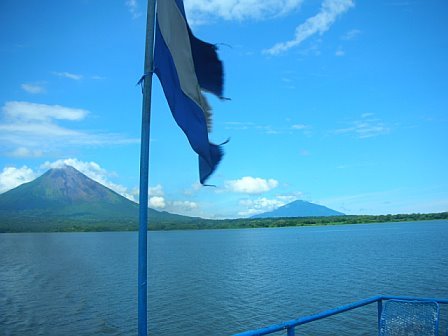
7
MarSunbathing in Haiti, Surfing in Nicaragua
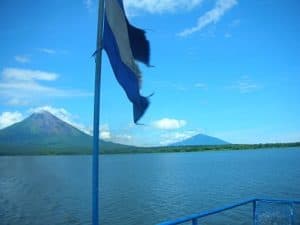 It was the summer of 2010 – one of my all-time favorite travel memories. A small rowboat carried me and my friend to a pristine beach cove, as beautiful as any postcard from a tropical paradise anywhere in the world. We had the entire palm-lined shore to ourselves, to sunbathe, look for shells, and swim in calm tepid water. At some point a man with a sack of fresh mangoes rowed up to the cove and sold some to us for about ten cents each, then rowed along to his next stop. The day couldn’t have been more perfect after an exhausting week of hard work and heartbreak. I should mention, we were in Haiti, six months after the devastating earthquake of 2010.
It was the summer of 2010 – one of my all-time favorite travel memories. A small rowboat carried me and my friend to a pristine beach cove, as beautiful as any postcard from a tropical paradise anywhere in the world. We had the entire palm-lined shore to ourselves, to sunbathe, look for shells, and swim in calm tepid water. At some point a man with a sack of fresh mangoes rowed up to the cove and sold some to us for about ten cents each, then rowed along to his next stop. The day couldn’t have been more perfect after an exhausting week of hard work and heartbreak. I should mention, we were in Haiti, six months after the devastating earthquake of 2010.
The earthquake measured 7 on the Richter scale and devastated a country already described as the poorest in our hemisphere. News cycles broadcast collapsed buildings, rescue efforts, then the raising of tent camps and influx of donations. Reporters spouted numbers on who promised how much aid money, which countries responded most honorably, and which NGOs warranted donations.
I wanted to see Haiti with my own eyes once travel re-opened for regular folks like me, as opposed to journalists and medical teams. Amy Bracken, a long-time reporter and radio producer specializing in Haiti, connected us with locals and provided tips for our potentially ill-conceived venture. The destruction proved worse and farther-reaching than I’d ever imagined, but I documented it with photos, and learned about Haiti from Haitians themselves. We ended up helping a group of locals clear the rubble of their collapsed three-story church by hand. The trip moved and changed me; the beach retreat was a bonus. The best (albeit minor) thing we did to “help” Haiti was to visit, learn, and put some tourist dollars into the local economy.
Flashback to spring of 2006 – another favorite travel memory. We lounged on hammocks surrounded by flowers all colors of the rainbow, watching exotic butterflies flutter by. It seemed as though each took its turn hovering over us, like a supermodel on a runway, then darted away making room for the next in line. My friend and I walked to the beach on a calm lake, and again, had the place to ourselves, aside from three horses who meandered down to sip some fresh lake water, then sleep on the sand. This happened on Ometepe Island, Nicaragua.
After that trip I returned to Nicaragua year after year, and started contemplating retiring there some day. I led groups of students to work on humanitarian projects such as building water filters, and helping out on a bookmobile. In-between work assignments we made excursions to some of the best surfing beaches in the Americas and zip-lining courses among howler monkeys, distributing our fair share of currency among the local businesses. I made connections with U.S.-based non-profits: the Newton/San Juan del Sur Sister City Project (on whose board I served for a decade), and the Hester Hodgdon Libraries for All Foundation, which partnered with my library-school alma mater, Simmons College. The true heroes I grew to know and admire were local leaders – the Nicaraguan organizers and activists who ran programs bettering their own communities, who called the shots and whose direction we followed.
During those years I fielded many calls by concerned parents of students, reluctant to allow their children to travel to a “war-torn” “third world” country. Understandably, they associated Nicaragua with the Iran-Contra scandal, the war between the Sandinistas and Reagan-backed Contras, Ollie North, and the Cold War threat of a Latin American revolution too close to home. Truth be told, we met dozens of locals who lived through those dark days and shared stories from their own memories, unfiltered by the news media, and students learned more than they could have from textbooks. When my own family expressed concerns over my choice of a second home, I assured them I felt safer on the Nicaraguan coast than at home in Boston, where I lived at the time amid the dangers of gang violence, break-ins and muggings.
Haiti and Nicaragua memories keep coming back to me lately as I anticipate two upcoming programs at the library. Haiti: Then and Now will feature journalist Amy Bracken, to discuss the country before the earthquake, in its immediate aftermath, and the state of things today. Nicaragua: Then and Now will include Dr. David Gullette, President of the Newton/San Juan del Sur Sister City Project, who has gone to Nicaragua every year since 1988, and offers expertise on the country’s history from the Sandinista revolution through the present day, including over 300 recent deaths of protesters. I plan to join both presenters to chime in as a tourist to these unlikely locales, and to advocate for the transformative experience of setting fear and assumptions aside to travel “off the beaten path.”
To learn more about Haiti and Nicaragua, please attend the following programs, or enjoy these recommendations:
Haiti: Then and Now, Morrill Memorial Library, March 11, 2019, 6:30-7:30 pm
Nicaragua: Then and Now, Morrill Memorial Library, April 22, 2019, 6:30-7:30 pm
The Country Under My Skin: A Memoir of Love and War, by Giaconda Belli
Collapse: How Societies Choose to Fail or Succeed, (Chapter 11), by Jared Diamond
John Pilger’s film, Nicaragua: A Nation’s Right to Survive
The Big Truck That Went By: How the World Came to Save Haiti and Left Behind a Disaster, by Jonathan Katz
Lydia Sampson is the Technical Services Department Head at the Morrill Memorial Library in Norwood, MA. Look for her article in the March 7, 2019 issue of the Norwood Transcript.

25
OctMy Nuclear Vacation
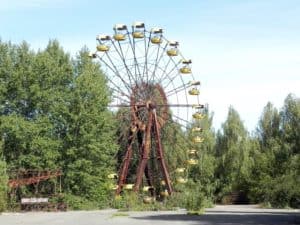 I recently returned from the trip of a lifetime and checked one of the top items off of my “bucket list.” London? Paris? Venice? No. At long last, I traveled to the Ukraine, to Chernobyl, the site of the worst nuclear disaster in history.
I recently returned from the trip of a lifetime and checked one of the top items off of my “bucket list.” London? Paris? Venice? No. At long last, I traveled to the Ukraine, to Chernobyl, the site of the worst nuclear disaster in history.
In 1986, during the Cold War when the Ukraine was part of the Soviet Union, reactor number 4 at the Chernobyl nuclear power plant exploded, launching radioactive material far and wide, contaminating most of the Ukraine and neighboring Belarus, and extending throughout Europe and the USSR, and beyond. In the immediate aftermath, finger-pointing, political agendas, and secrecy delayed evacuation, exposing local residents to severe radiation. Finally, buses carried thousands of residents off, assuring them they’d come home in a few days. They never returned, and the town of Chernobyl and neighboring city of Pripyat, constructed specifically for the power plant builders and employees, became ghost towns.
The Ukraine designated an exclusion zone surrounding the entire region with barbed wire fences, checkpoints and armed guards. This forbidden territory became my dream destination. As an avid adventure traveler and “urban explorer,” ghost towns, abandoned buildings, and post-disaster locales fascinate me. For years I knew of Pripyat, a city frozen in time, full of empty schools and homes, and even an amusement park set up for a May Day celebration that never happened. I had seen photos and descriptions online and in Atlas Obscura: An Explorer’s Guide to the World’s Hidden Wonders, as well in the horror movie Chernobyl Diaries (which turns out to have surprising accuracy, until the part when zombies appear).
I had to see this place with my own eyes. We arrived in Kiev, a delightful city, and spent several days sightseeing and eating well, with the help of Lonely Planet: Ukraine. Then met our small group of adventurers and headed two hours north to Chernobyl. Tourists may visit only with authorized guides, many signatures on liability waivers, and instructions on how to dress, behave, and use a Geiger counter. Most visitors spend a day in the exclusion zone, but we opted for the two day tour, including a sleepover in a no-frills Chernobyl hotel.
Although entering buildings is “technically” forbidden, we explored the shells of schools with kids’ books covering the floors in rooms of overturned desks, with occasional stuffed animals or children’s shoes peeking out of the rubble. We walked through abandoned gymnasiums with parquet floors caving in, dark office buildings interrupted mid-workday, and people’s homes with heartbreaking glimpses of how they lived before fleeing in a hurry. The iconic amusement park rose out of the forest, the Ferris wheel rusted but still standing, and bumper cars poised to smash although they haven’t moved for decades.
Our tour took us inside the shell of a defunct cooling tower, to the “red forest,” where Geiger counters beeped non-stop, along the top secret Soviet Duga radar, and finally up close to reactor 4 itself. For years this proximity would have caused radiation sickness, but in September 2017 construction and placement of a new “sarcophagus” was completed, covering the destroyed reactor and its inferior original enclosure, assuring confinement of the radiation for at least 100 years. A fascinating new documentary, Building Chernobyl’s Megatomb goes into detail on this project.
The explosion occurred when I was young, so I only knew the basics about Chernobyl until reading Serhii Plokhii’s timely book, Chernobyl: The History of a Nuclear Catastrophe. This 2018 definitive history delves into the origins and construction of the power plant, a nearly minute to minute account of the night of the explosion itself, and the local and global impact of what occurred. Plokhii introduces major players in the event, from laborers to politicians, humanizing them as he describes personalities and motivations, often incorporating their own words. Plokhii’s history extends through the collapse of the USSR up to the current day. I visited Chernobyl well-informed.
Do not avoid coming to the library because of the radioactive librarian! In fact, entering the exclusion zone for a limited time exposes people to little more harm than x-rays and air travel. Geiger counters alerted us of “hot spots” – certain areas or items with dangerous radiation levels: the cloth part of a discarded gas mask, the “claw” of a piece of heavy machinery that reached into the reactor in attempts to pull out its graphite rods, an industrial refrigerator beside a crate of empty milk bottles.
Believe it or not, some returned to Chernobyl after the evacuation, and a handful still live in the exclusion zone. Like residents unwilling to heed evacuation warnings due to hurricanes and fires, these individuals knew no other “home,” and would rather die in Chernobyl than live as refugees in Kiev or elsewhere. A film available to watch for free on Kanopy, The Babushkas of Chernobyl, profiles several of these residents, all elderly women, and we had the opportunity to meet one in person. Victoria lives with her dog Dana, who entertained us by singing when someone played the accordion. She served snacks and vodka and surmised that her husband died because he did not drink vodka.
Deaths from nuclear fallout prove difficult to measure. Radiation sickness does not kill instantaneously, but after days, weeks or years depending on exposure. Cancer rates and birth defects skyrocket and researchers cannot always parse out which would have occurred anyway versus which were brought on or accelerated by radiation. The babushkas somehow survive and live off the land in Chernobyl. For me, it was an incredible place to visit… but I wouldn’t want to live there.
Lydia Sampson is the Technical Services Dept. Head at the Morrill Memorial Library in Norwood, MA. Look for her column in the October 25, 2018 edition of the Norwood Transcript.
